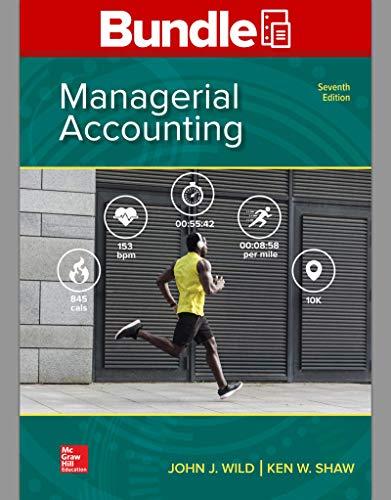
(1)
The ratio of cost to net sales shows the efficiency of a business in production. This ratio should always be low. Cost to sale ratio also shows the total cost of goods sold against total sale amount.
To compute:
The ratio of cost to sales ratio for company A.
(2)
The ratio of cost to net sales shows the efficiency of a business in production. This ratio should always be low. Cost to sale ratio also shows the total cost of goods sold against total sale amount.
To compute:
The ratio of cost to sales ratio for company G.
(3)
The ratio of cost to net sales shows the efficiency of a business in production. This ratio should always be low. Cost to sale ratio also shows the total cost of goods sold against total sale amount. Higher ratio of cost to sale shows that the total cost is against the sales.
To discuss:
Company with higher cost ratio.
Want to see the full answer?
Check out a sample textbook solution
Chapter 4 Solutions
Managerial Accounting + Connect Access Card
- Principles of Accounting Volume 2AccountingISBN:9781947172609Author:OpenStaxPublisher:OpenStax College
 Intermediate Accounting: Reporting And AnalysisAccountingISBN:9781337788281Author:James M. Wahlen, Jefferson P. Jones, Donald PagachPublisher:Cengage Learning
Intermediate Accounting: Reporting And AnalysisAccountingISBN:9781337788281Author:James M. Wahlen, Jefferson P. Jones, Donald PagachPublisher:Cengage Learning Managerial Accounting: The Cornerstone of Busines...AccountingISBN:9781337115773Author:Maryanne M. Mowen, Don R. Hansen, Dan L. HeitgerPublisher:Cengage Learning
Managerial Accounting: The Cornerstone of Busines...AccountingISBN:9781337115773Author:Maryanne M. Mowen, Don R. Hansen, Dan L. HeitgerPublisher:Cengage Learning


